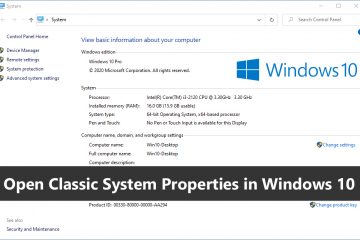Many Windows users face slow-performance issues in Windows 10. Sometimes this occurs as an input delay, and one way to fix this is to change some paging file settings in Windows 10. So how do you fix this slow performance problem in Windows 10 to increase system speed?
Following the official launch of Windows 10, millions of users have upgraded their PCs to Windows 10, taking advantage of Microsoft’s free upgrade offer. However, many desktop users have reported Windows 10 performance decreases on the Microsoft and Reddit forums after upgrading their systems.

There are some problems with the Windows 10 operating system, as the number of people experiencing a performance slowdown in Windows 10 is huge. This slow performance usually manifests as an entry delay.
For example: After clicking on the Start menu, it takes about 2 to 3 seconds to refresh your desktop. Many users have switched to previous versions of Windows OS, complaining about this slow performance issue in Windows 10.
According to a user of Microsoft Community Forums, the slow performance problem of Windows 10 can be solved by modifying the settings of the swap file in Windows 10 which affects and improves the overall performance of the system.
Read:- How to Fix Memory Management BSOD Error on Windows 10
This was all a problem at the time, but it can still appear on some PCs these days. So if you are experiencing a performance slowdown problem in Windows 10, you can try to speed up the operating system by changing the default settings for file control.
How To Fix Windows 10 Slow Performance Issue and Boost System Speed
If you are troubled by the slowdown of Windows 10 on your computer, we recommend that you follow this short guide to speed up your system.
You have to change the default settings for page file control in Windows 10 from system managed format to manual format. Here you can change the swap file memory file and its maximum size according to your PC’s RAM.
How to fix slow performance in Windows 10:
- Open the Start menu and locate the Control Panel. Click on it.
- Here in the control panel, go to the search field at the top right of the window and type in the display. Now press Enter.
- Now search adjust the look and performance of Windows.
- Go to the Advanced tab and click Edit in the Virtual Memory section.
- Now cancel the option “Automatically manage the size of the swap file for all readers”.
- Select C: Drive by default on which Windows 10 is installed, then choose Custom Size. Then change the initial size and maximum size to the values suggested by Windows 10 (shown below).
- Now click on set and then press OK to save the settings.
- Restart the computer for the changes to take effect and fix the slow performance issue in Windows 10.
After starting your PC, you should get better performance than Windows 10. What happens here is that Windows 10 uses the swap file to store data, when your RAM is full during the process.
Sometimes the system may have problems managing the paging file. This is why its manual configuration can be useful to speed up Windows 10. So, if there is nothing wrong with your system, then you have to set the parameters of the swap file to be managed by the system.



0 Comments